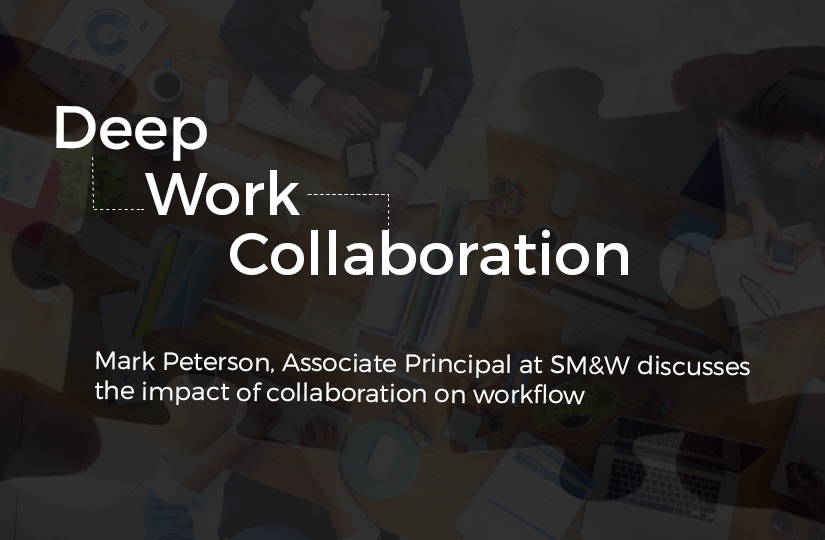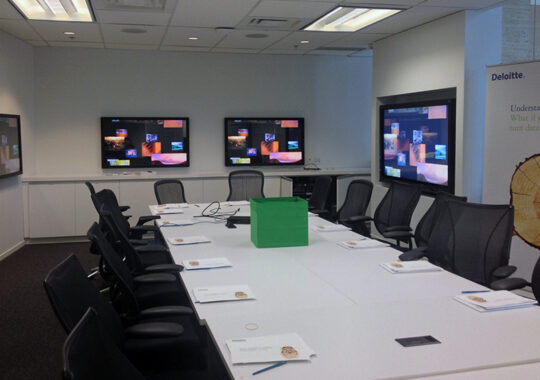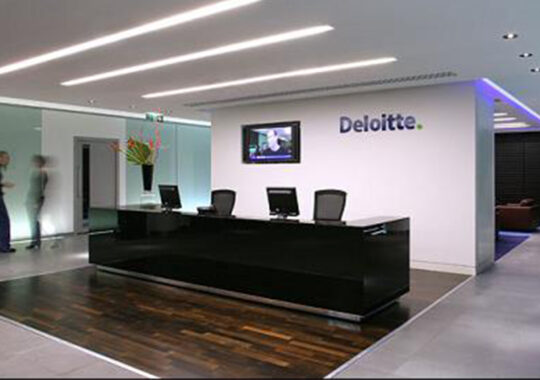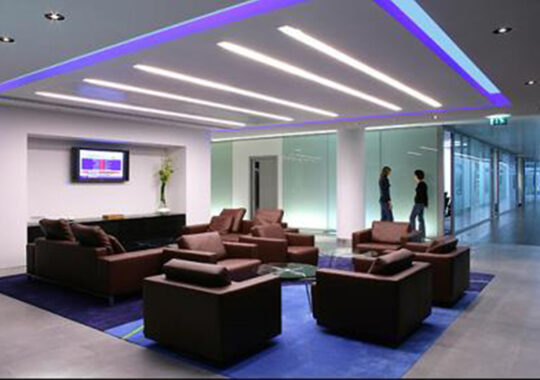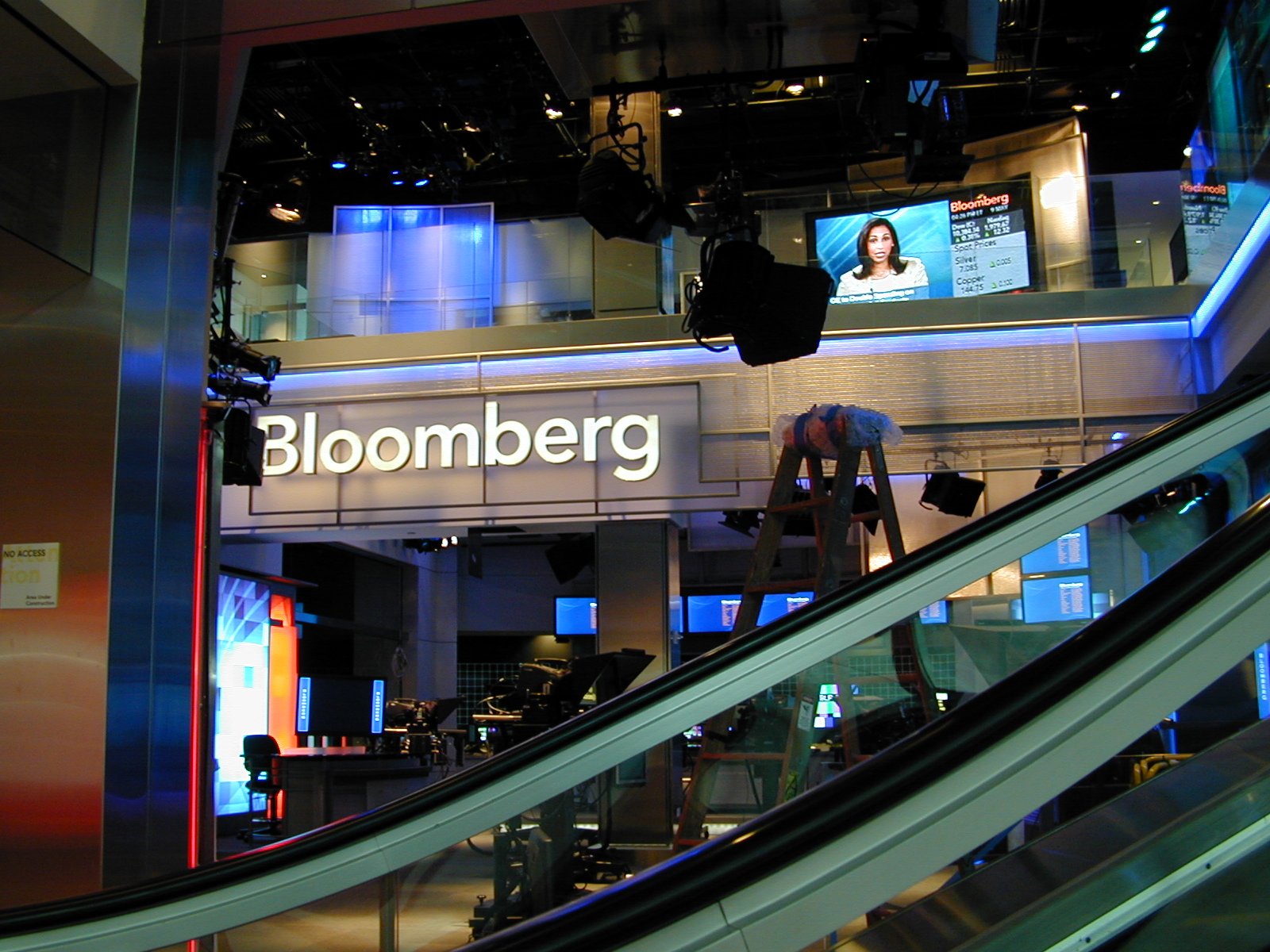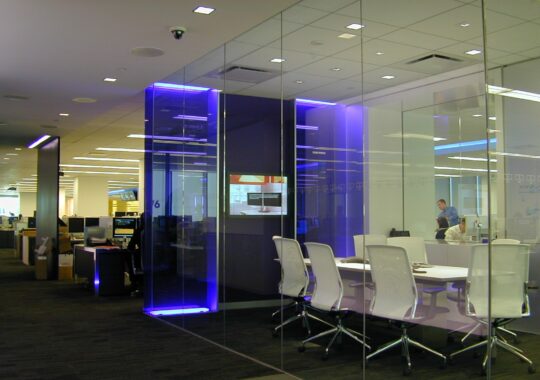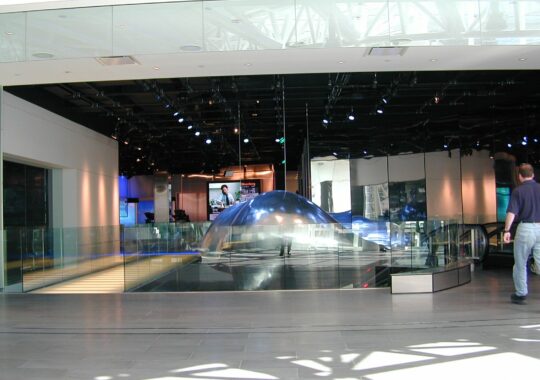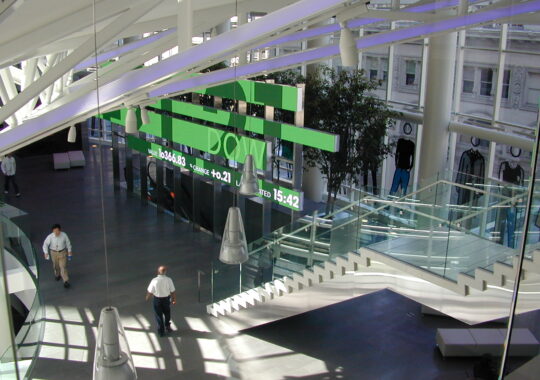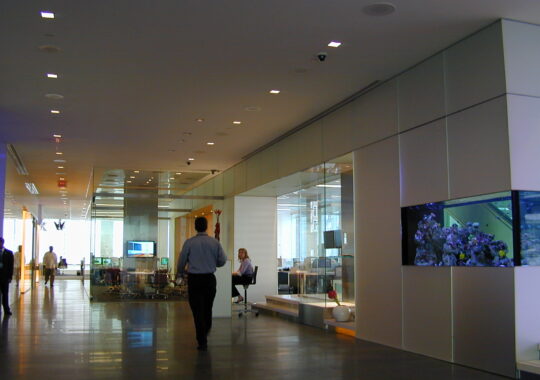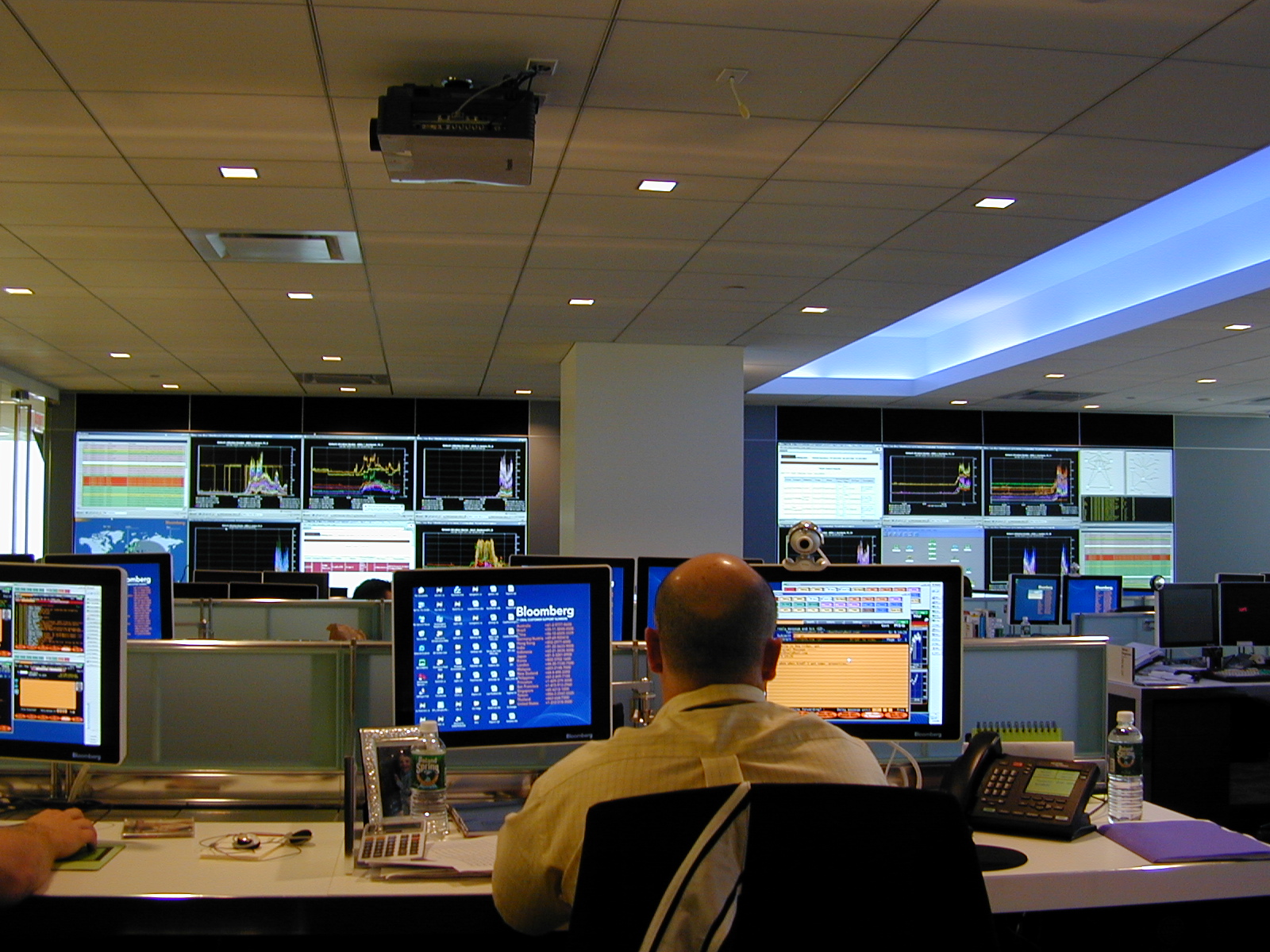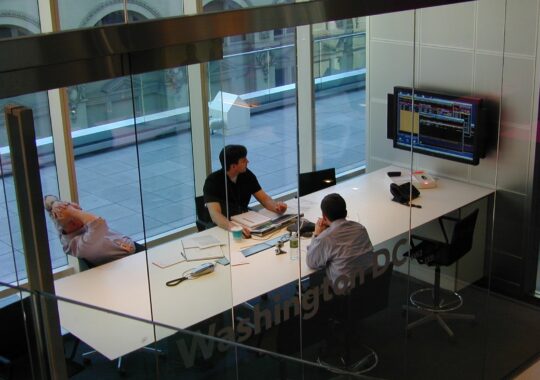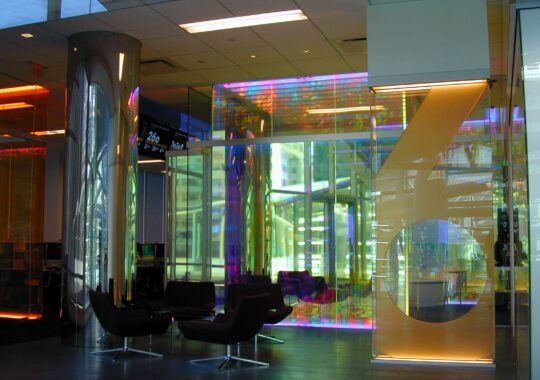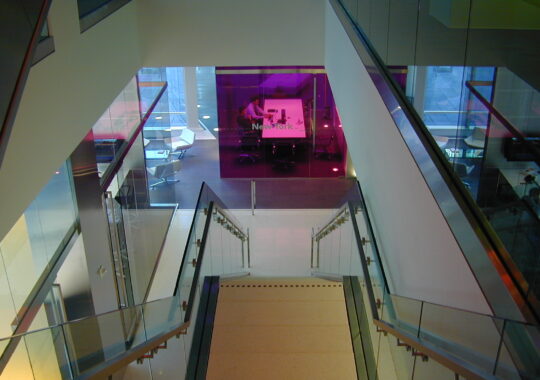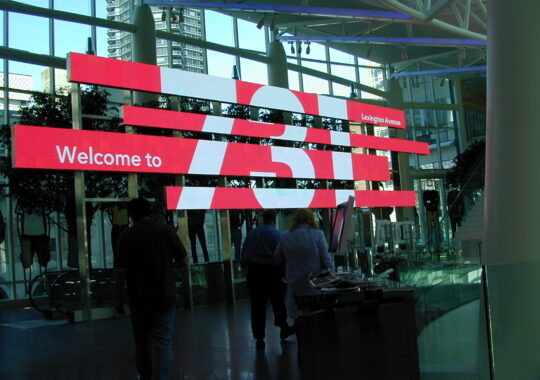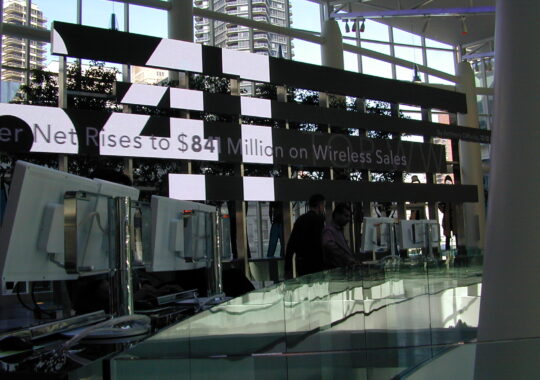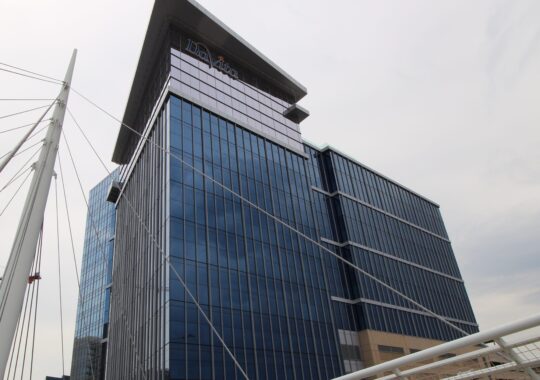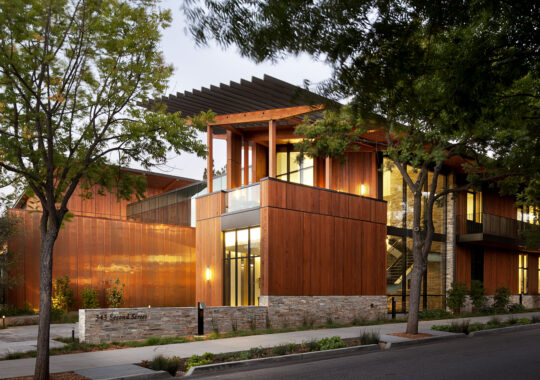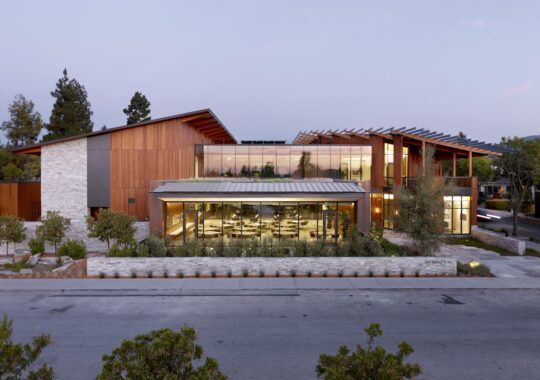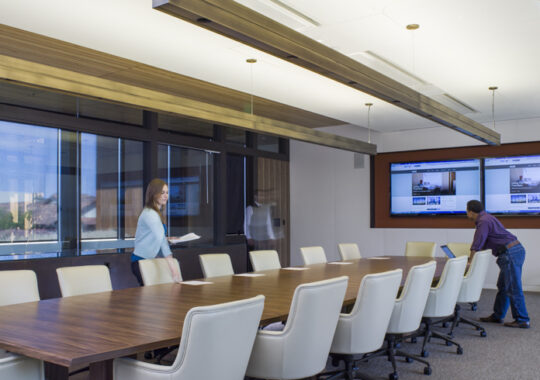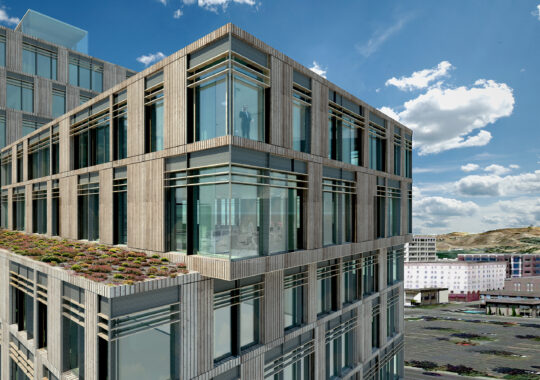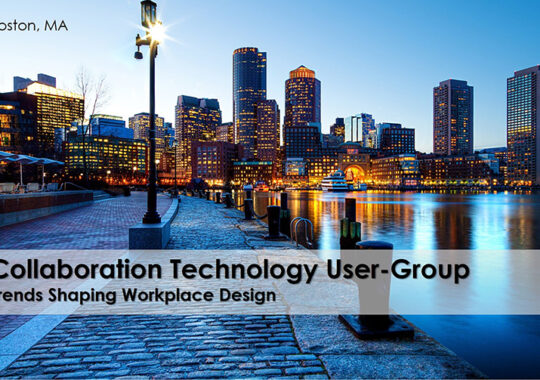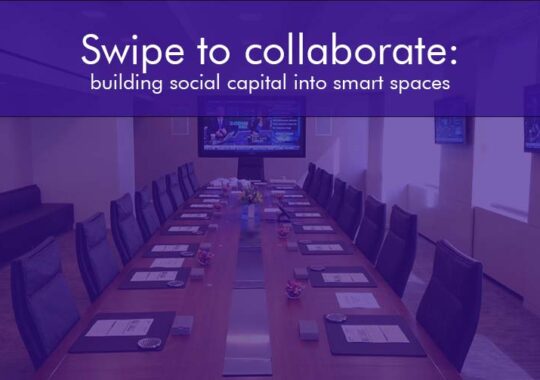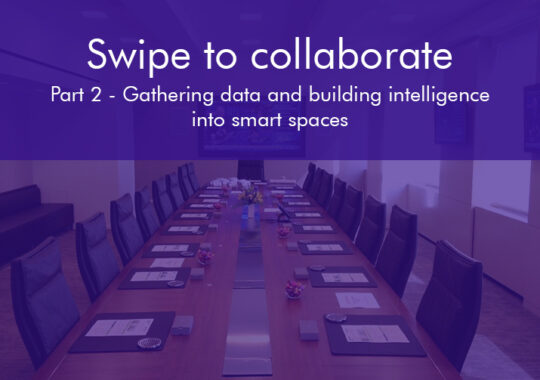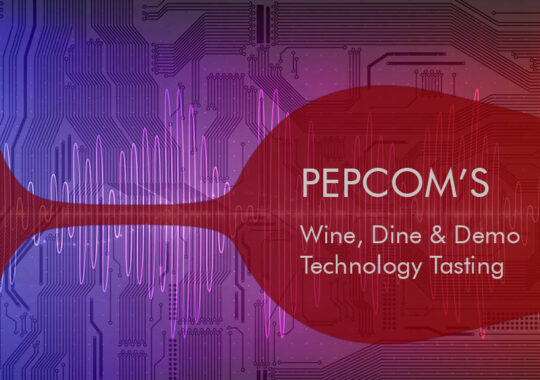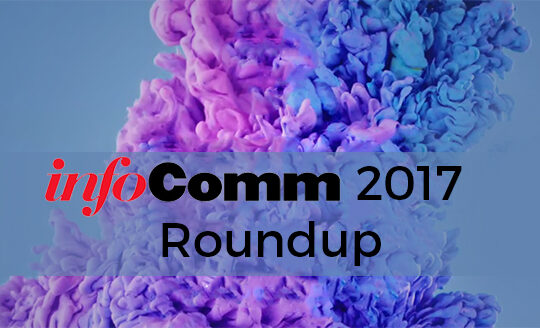Abstract
This article examines the impact of collaboration on workflow and opportunities to position new technology solutions to identify and facilitate the intersection of light and deep work.
Introduction
While collaboration technologies are perceived as increasing organizational productivity because they foster real-time interaction, recent studies indicate that frequent interruption is preventing employees from performing more intellectually demanding tasks. The solution resides in changing the emphasis on high-availability, analyzing collaboration effectiveness across teams, creating low-distraction spaces, and applying tools that combine real-time and asynchronous components to reinforce intellective engagements.
For professionals, their most thoughtful work is not getting done between 9AM and 5PM because that’s when they are in highest demand. Opportunities to strategize and problem solve are being degraded by instant messaging and open-office layouts designed to foster instant response. According to Joy Stephan, founder of 20Chairs, a Workplace Strategy & Engagement Solutions consultancy, the way we organize and how we work is based on the industrial revolution, a time that favored doing the job with as much expediency as possible (Stephan, 2018). Today’s knowledge worker cannot perform deeper processing tasks within the same always-available model (Cross, Rebele, and Grant, 2016).
“Have you found yourself staring at the data and not finding the answers? You have to walk away. Stepping back allows the brain to find non-linear connections. How people are expected to work is holding back their capacity to solve complex problems.” -Joy Stephan (2018)
Historically, only the fiercest survived by dominating the competition, but now collaboration is critical to the organizational process. Cooperation and complex interdependencies are playing a much more important role in the global economy (Rheingold, 2005). Until recently, people resisted collaborating because it took too much time. Tools like voice, video and instant messaging accelerate anytime and anywhere feedback, providing employees greater opportunities to avoid course correction in the decision-making process. As a result, businesses are investing heavily in these solutions alongside the team organizational model, and leadership styles are also shifting in response to their effectiveness.
Leadership and Measuring Collaboration Effectiveness
To match the surge in collaborative workflow, organizations are finding leaders with more participatory and less directive skills, encouraging employees to be engaged and responsive (Fridman, 2017). With a focus on peak utilization, organizations encourage more real-time collaboration; they want teams to expand who is brought to the table and elicit a larger number of inputs into the process (Stephan, 2018), and yet these companies are encountering challenges in getting collaboration to work efficiently.
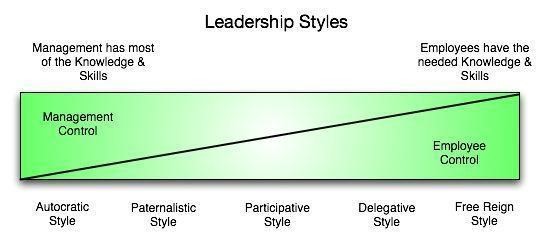 Image from: Leadership Styles (Clark, (2015)
Image from: Leadership Styles (Clark, (2015)
Individuals who are the highest in demand by their peers to gain access and collaborate are those considered to be the best information source. Unfortunately, these are also the employee who are least likely to be engaged and most likely to leave the organization and take their knowledge and network with them (Cross, Rebele, and Grant, 2016). Studies indicate that once the demand to share information increases over 20%, these sought-after employees start to check out.
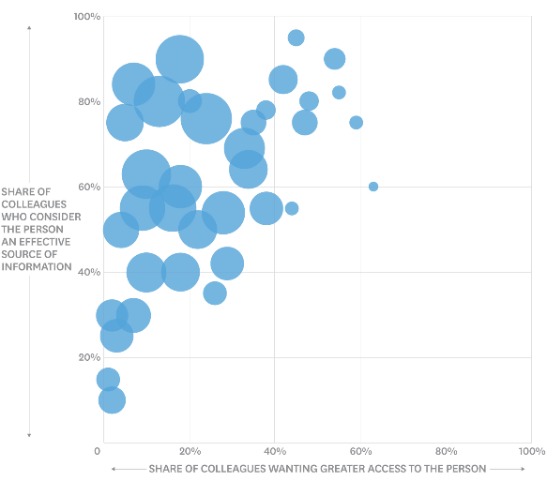 Image from: Collaboration Overload (Cross, Rebele, and Grant, 2016)
Image from: Collaboration Overload (Cross, Rebele, and Grant, 2016)
In response, organizations need to understand how information flows across teams, and how to create successful collaboration models. To achieve this, management can take advantage of the newest behavioral analytics tools that measure employee and team collaboration effectiveness. Companies like Collabogence gather data from productivity applications like email, telephones, instant messaging and web conferencing, strip the identifiers and cross-reference to infrastructure applications such as building management systems, badging and reservation systems. The results are used to identify the dynamics of individuals, departments and even the importance of relationships with outside organizations (Smit, 2018).
Collaboration Overload and the Impact to Deep-Work
Armed with insights into collaborative behavior, organizations can revise business strategies, optimize workplace layouts, and predict team performance, but is this emphasis on collaboration actually making productive use of employee time? If not done effectively, real-time collaboration becomes meeting overload. People need time to get their process work done, and if employees are constantly engaged in instant response, what does the future hold for accomplishing deeper work?
Deep Work is the ability to focus without distraction on a cognitively demanding task (Newport, 2016). Organizations are likely to need more focused work to make sense of near-infinite data now streaming in. Companies are leveraging business intelligence tools to analyze big volumes of data, but brute computing force is not sufficient, someone must determine how to act on the results.
Today, expectations around immediacy are stretching everyone thin. While managers are continuously being measured by the immediacy of their team’s results, it is difficult to focus on fostering a participative environment. Inconsistency sends a mixed message to employees and fosters distrust and disengagement within teams. (Stephan, 2018). The emphasis on immediacy make it easy to fall for analyzing what’s on the surface, while missing the deeper insights that lie beneath the surface. Technology tools further this dilemma by simplifying the results. Charles Duhigg, author of Smarter Faster Better, contends that to turn data into knowledge one needs to practice disfluency: breaking down the material and re-shaping the data so it makes sense to your internal processes achieves the richer insight (Duhigg, 2016). Here’s a real-life example: a pile of Sticky notes at the end of a collaboration session.
“…moving the data around, stepping back and trying to make sense of it all. There is a moment where you think ‘Oh my god I’m never going to find a coloration’. This is the moment right before the breakthrough to deeper insight.” -Stephan, 2018
Electronic sticky note solutions typically used for capturing group participation in real-time can also be used for deeper analysis and solution finding. The next generation of data visualization tools, like Prysm’s Digital Workspace Platform and Multitaction MT Canvus are examples of products that address Duhigg’s disfluency process. Facilitators retrieve the results and manipulate the data on an infinite canvas.
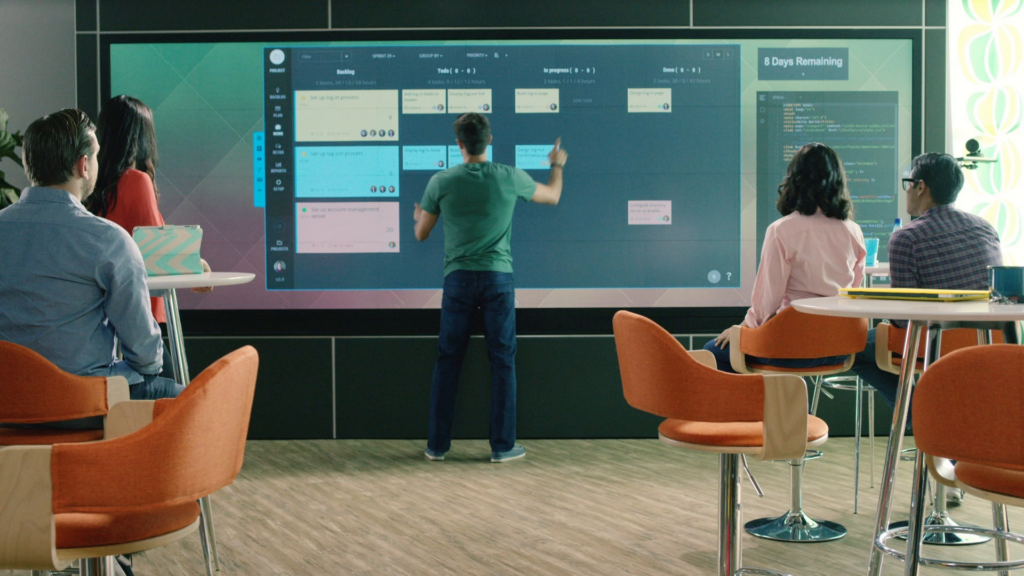 Image from: Digitize your journey mapping process (Grap, 2017)
Image from: Digitize your journey mapping process (Grap, 2017)
Avoiding Counter-Productive Collaboration
While turning off devices may seem a simple solution to gaining valuable focus time, Cal Newport, author of Deep Work: Rules for Focused Success in a Distracted World, contends the problem runs much deeper. The activities that impact Deep Work cycles are the same workplace strategies considered innovative because they foster collaboration.
 Deep Work: Rules for Focused Success in a Distracted World (Newport, 2016)
Deep Work: Rules for Focused Success in a Distracted World (Newport, 2016)
“Our attraction to digital devices has created a permanent fracturing of our attention, affecting our ability to maintain focus and be present.” -Cal Newport (2016)
There are several strategies to fostering Deep Work that do not require going away for days at a time, such as performing Deep Work on a repeating schedule, switching back and forth between Deep and Shallow Work, and journaling to identify best times for Deep Work (Newport, 2016). These may be practical solutions for an individual, but unless the team’s Deep Work is synchronized everyone is “checking out” and there is no one available for real-time collaboration. Either we synchronize shallow work, or we work asynchronously, and synchronizing shallow work is where we are now: meetings dominate everyone’s schedule. With the right asynchronous tools, employees can become less accessible while performing cognitive tasks because they can upload progress and bring the results back to the collaborative level.
If we look at the cycles of asynchronous collaboration, the two factors that have greatest impact the transference of Deep Work results are the ability to express the outcome of the work and having effective catch up sessions with the team (TMail21, 2018). When the Deep Worker comes back with answers, the team does a type of “brain-share”. This is a focused session, not the check-box-on-participation activity.
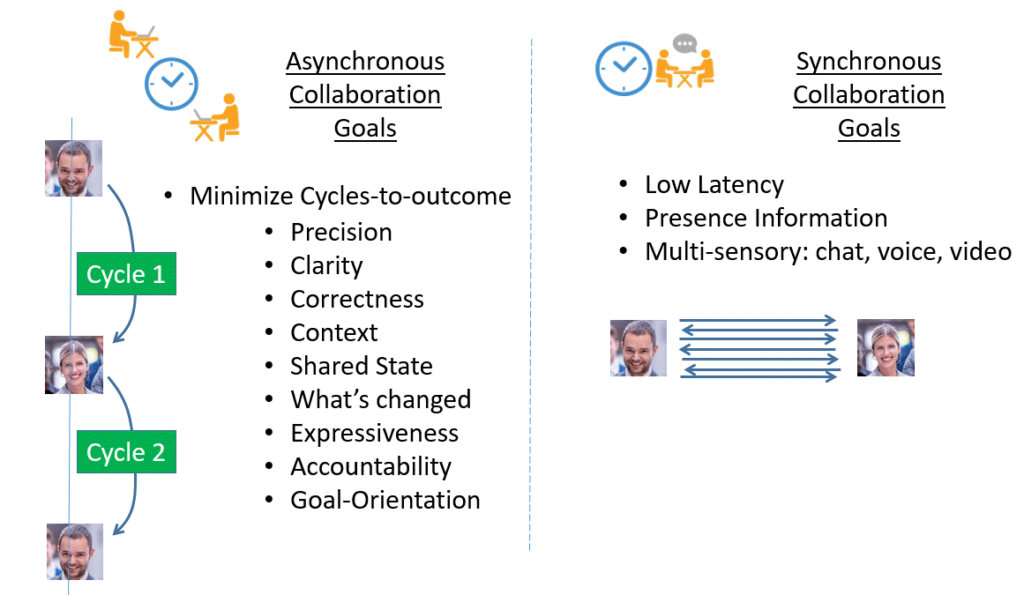 Image from: Deep Collaboration – Making deep work possible for teams (TMail21, 2018)
Image from: Deep Collaboration – Making deep work possible for teams (TMail21, 2018)
“Deep collaboration is collaboration that optimizes asynchronous collaboration.” -TMail (2018)
In Deep Collaboration, the journey to how a certain conclusion was reached, is just as important as the final destination. For a Deep Worker to be efficient, they need a variety of ways to express themselves so that their contribution is obvious and team members are least likely to request clarification. Relevant collaboration tools are threaded discussions and content depositories on a platform that is remotely accessible.
“Deep work happens when driving home, walking the dog; more ideas can happen in those 40 minutes than staring at the computer for three hours. More awareness of when you have great ideas can be developed. If they happen when you leave the office and it’s acceptable to leave the office to have lunch, maybe take a walk during lunch and eat at your desk. It’s not necessarily about time of day, but the doing. Some people have breakthroughs when they are moving, others when they shower or exercise.” -Joy Stephan (2018)
For the receiver to fully grasp the message coming from Deep Work, the current state of contribution needs to be clear. A common problem with threaded conversations is that they encourage information to trickle out, which makes it possible for teams to act on incomplete material. To resolve this, the sender needs to be able control the release of information in meaningful portions and versions. The receiver may see changes such as tasks added, files created, and content updated, but the overall meaning may still be lost unless the sender is able to provide commentary that is synchronized with these updates (TMail, 2018).
Unlike email, where one has to sift through messages to decipher the current state of a project, the tools found inside collaboration platforms such as Slack, Spark and Chatter, facilitate documentation and versioning. The asynchronous portion of these tools, however, lack transference. Deep Work transference requires sharing the thought processes that went into the posted results. This is when these tools show their greatest ability to mix real-time collaboration with an asynchronous component within the same user experience.
Next Generation Deep Workspaces and Deep Collaboration Technologies
Distraction-free spaces are becoming an important component in designing well being workplaces. According to Jeff Pochepan (2016), the next generation of commercial office space will promote Deep Work to foster innovation, in direct response to the distractions found in open office layouts. Just as the office floor plan is being reshaped into familiar spaces found in the home, such as conferencing takes place in a living room-like setting, there will be spaces intended for less stimulation.
“Imagine a co-working space built for maximum flow, original invention, and empowering culture. A place where you can shut off all distractions and dive deep into a problem, as well as sweep yourself up in a whirlwind of collaborative work.” -James Mathison (2016)
In Newport’s designs, the actual Deep Work happens inside a six-by-ten-foot sound-proof chamber intended to promote focus and uninterrupted work flow (Pochepan, 2016). Deep Collaboration is when team members step in and out of the mode of Deep Work then regroup and talk about what they came up with. For these isolated spaces to be effective, there needs to be a means of sharing the results, similar to walking back into the living room.
 Image from: How Cal Newport’s deep work concept will influence office design (Pochepan, 2016)
Image from: How Cal Newport’s deep work concept will influence office design (Pochepan, 2016)
The challenge is that eureka moments do not occur in a specific room or building. This is where we fit the future of technology into the Deep Work equation. The same technology that is making it possible for working from home to be considered simply “working” (Trollope, 2018) needs to extend to any setting that is conducive to an individual’s Deep Work preferences.
Similarly, the mapping and measuring of collaborative performance through ambient AI technologies that track and respond to how our teams work together needs to extend outside the office, so that artificial assistants can push back on collaboration interruptions, when and wherever workers are in Deep Work cycles.
Wireless Sharing Holds the Key to Deep Work Transference
The same challenge with dynamic location applies to sharing content, which is critical to Deep Work transference because it promotes data-driven consensus, conceptualization, and perspective (Jaynes, 2018). These engagements are not necessarily structured. As the conference room walls (and associated whiteboards) start to disappear, displays need to show up everywhere. Wireless sharing products like Mersive Solstice provide employees the ability to share content much more fluidly than plugging in a laptop. The relative ease of casting content will have a significant impact on sharing out Deep Work results. Unlike traditional videoconferencing and unified collaboration platforms, the next generation of wireless sharing solutions will support multiple, concurrent sources and multi-site collaboration.
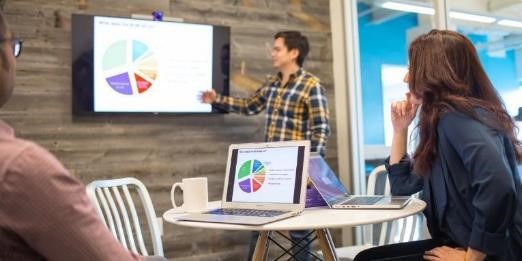 Image from: High Five (Mosley, 2018)
Image from: High Five (Mosley, 2018)
As a result, the meeting room equation is getting flipped. No longer is wireless sharing just a presentation tool. Because the Deep Worker is using their own device, they have full confidence of the session’s content, and these solutions work seamlessly with Spark boards and Microsoft Surface Hubs. Wireless sharing solutions can tie into directory, room reservation and authentication services, providing utilization metrics that can be used to measure collaboration effectiveness as well as space requirements for Deep and Light work.
Conclusion
Organizations need to recognize the impact that interruptions cause by real-time collaboration on deep work and allow employees to take more time to disengage. Management can take advantage of the tools that measure collaboration to shape teams and processes accordingly. Solutions are already available that combine real-time, and asynchronous collaboration and can be used to bridge the processes. Combining wireless sharing technology with team-focused AI products may be the next technology platform to emerge at the intersection of Deep and Light Work Collaboration.
References
• Clark, D. (2015). Leadership Styles. A Big Dog, Little Dog blog. Retrieved from http://www.nwlink.com/~donclark/leader/leadstl.html
• Cross, R., Rebele, R., Grant, A. (2016). Collaborative Overload. Harvard Business Review. Retrieved from https://hbr.org/2016/01/collaborative-overload
• Duhigg, C. (2016). Smarter Faster Better: The Transformative Power of Real Productivity. Random House. Available from: https://www.amazon.com/gp/product/0812983599?tag=randohouseinc35735-20
• Fridman, A. (2017). 6 Best Practices to Increase Work Force Engagement. Inc. Retrieved from https://www.inc.com/adam-fridman/six-best-practices-to-increase-workforce-engagement.html
• Jaynes, C. (2018). Shen Milsom Wilke CTO Deep-Dive, February 21, 2018.
• Mathison, J. (2016). I can’t stop dreaming of Eudaimonia. Medium. Retrieved from https://medium.com/@jsmathison/i-cant-stop-dreaming-of-eudaimonia-84d9059b551c
• Mintzber, H. (1976). Planning on the left side and managing on the right. Harvard Business Review. Retrieved from https://hbr.org/1976/07/planning-on-the-left-side-and-managing-on-the-right
• Mosley, S. (2018). Why wireless screen sharing is the solution to all your conference room problems. High Five. Retrieved from https://highfive.com/blog/wireless-screen-sharing-benefits/
• Newport, C. (2016). Deep Work: Rules for Focused Success in a Distracted World. Grand Central Publishing.
• Pochepan, J. (2016). How Cal Newport’s deep work concept will influence office design. Strong Project. Retrieved from https://blog.strongproject.com/how-cal-newports-deep-work-concept-will-influence-office-design/
• Grap, H. (2017). Digitize your journey mapping process. Prysm Blog. Retrieved from https://www.prysm.com/blog/digitize-your-journey-mapping/
• Rheingold, H. (2005): Ted Talks: The new power of collaboration. Retrieved from https://www.ted.com/talks/howard_rheingold_on_collaboration
• Smit, P. (2018). Collabogence. Retrieved from https://cg.infinitekm.com/Public_article.aspx?id=96
• Stephan, J. (2018). Retrieved in conversation with Stephan, J.
• TMail21 (2018). Deep Collaboration – Making deep work possible for teams. Retrieved from https://tmail21.com/deep-collaboration-making-deep-work-possible-for-teams/
• Tri (2018). The four states of competence explained. Education and Learning, Examined Existence. Retrieved from https://examinedexistence.com/the-four-states-of-competence-explained/
• Trollope, R. (2018) Collaboration in 2018: Trends we’re watching. Medium. Retrieved from https://medium.com/@rowantrollope/2018-collab-trends-743a16c73c13
